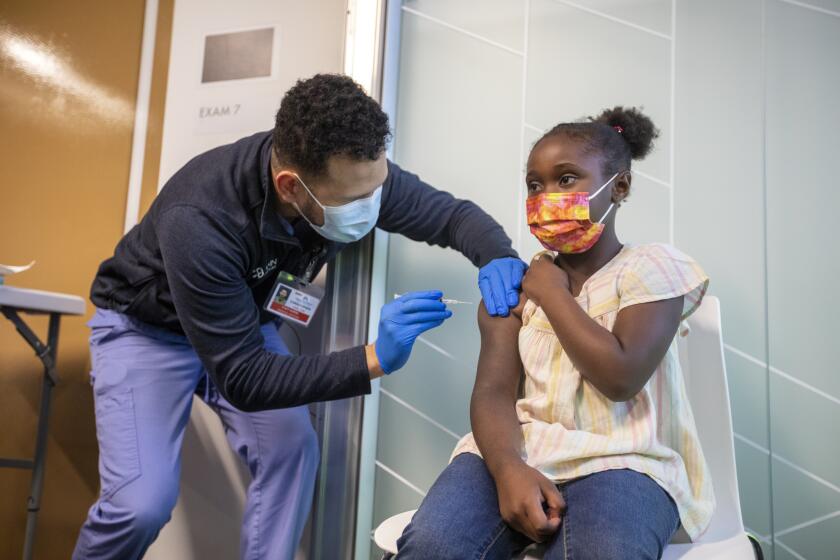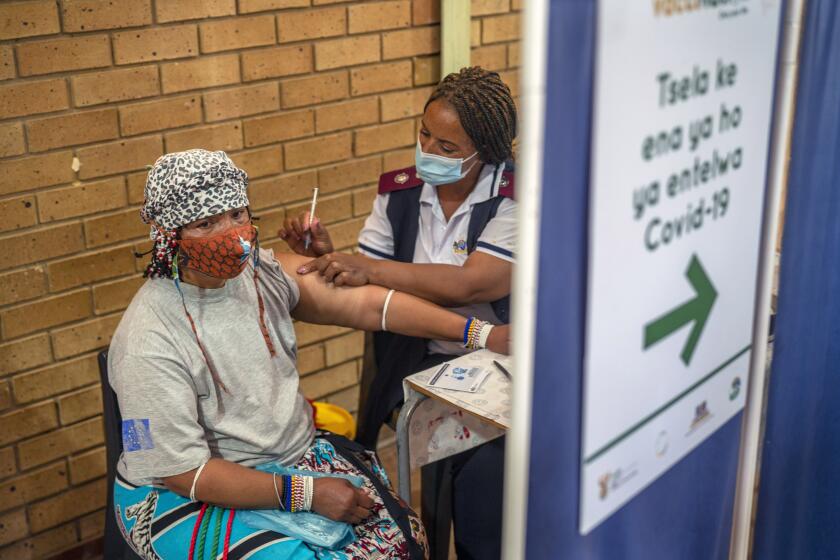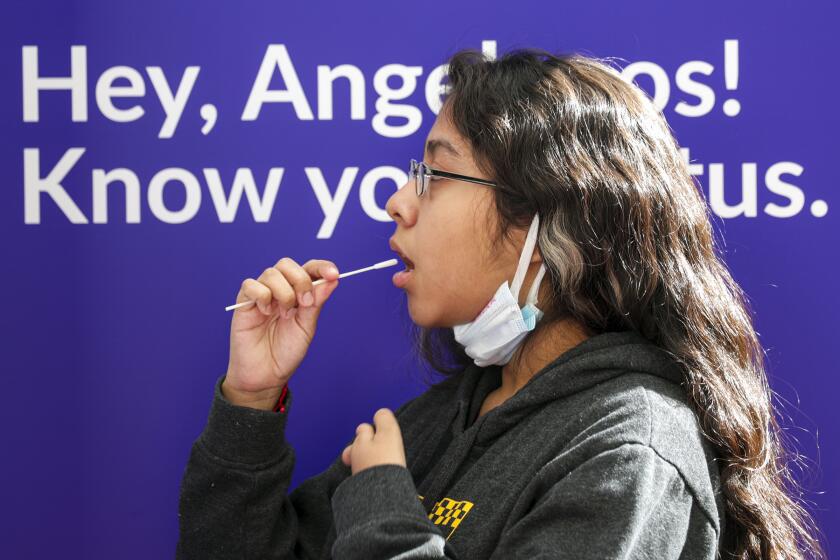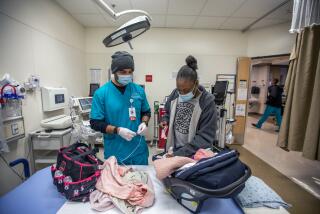Omicron is considered a milder coronavirus, but scientists aren’t so sure
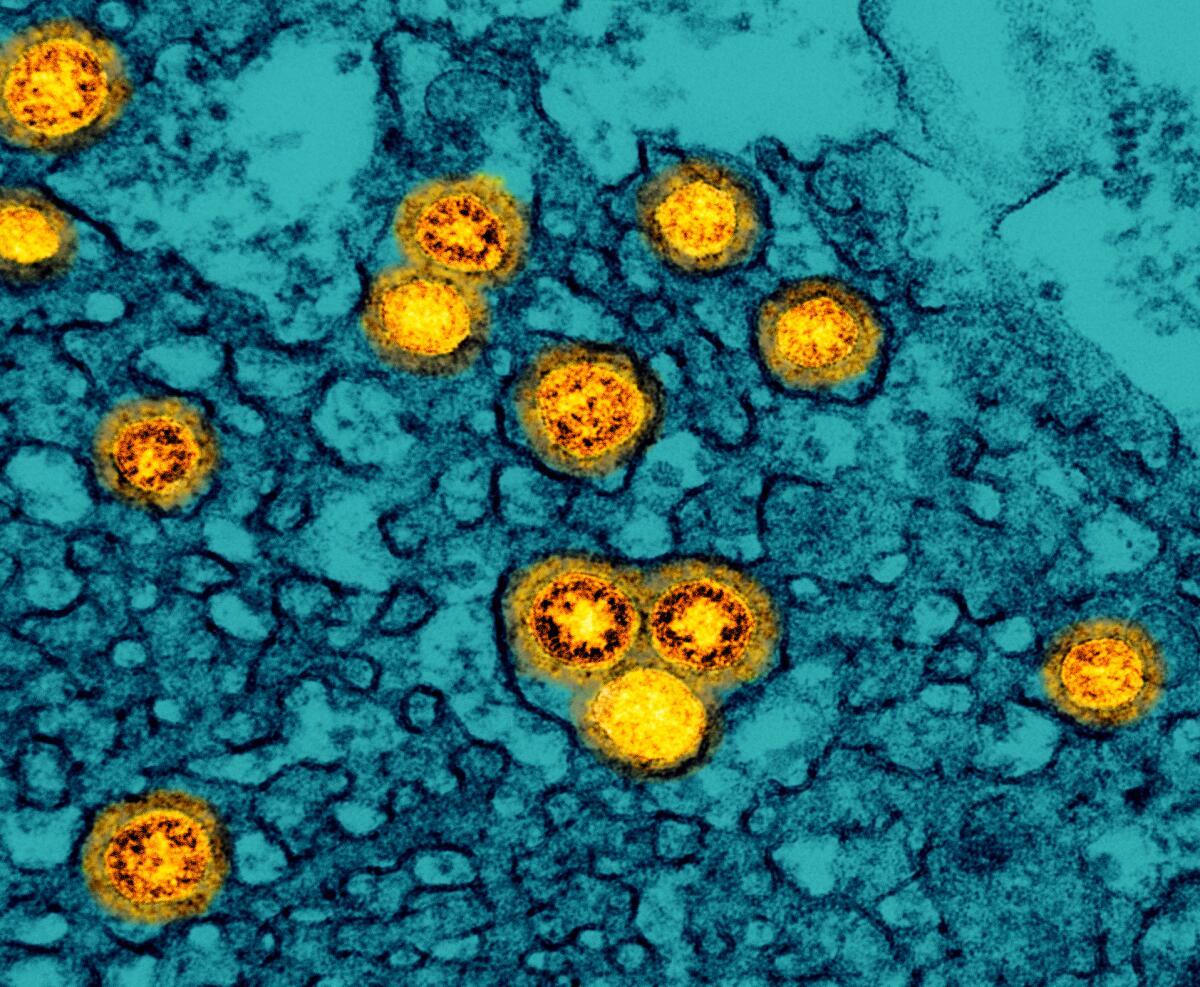
For more than two years, Cathy Baron and Sara Alicia Costa managed to duck the coronavirus. But despite their being fully vaccinated and boosted, the Omicron variant finally caught them.
Baron is an actress and dance instructor who lives in Santa Monica. Costa is an architect in Austin, Texas. Both are 40 and healthy. But the two friends saw two very different sides of the variant, which they expected to be gentler than earlier strains.
For Costa, the Omicron variant lived up to its reputation for mildness, causing headaches and “something like a crummy cold” for a couple of days. She was visiting Baron and surfing in Santa Monica a week after testing positive.
Baron’s illness was deeply chastening. She was flattened for several days with a high fever and debilitating muscle aches, and was too exhausted to teach her pole-dancing class for three weeks. Two months later, she’s still coping with fatigue, brain fog and episodic coughing fits.
Baron and Costa are what scientists would dismiss as an “n of 2.” If their experience were a study, the sample size would be far too small to draw any conclusions, especially one as important as whether the Omicron variant really is less virulent than the SARS-CoV-2 variants that came before it.
And yet, their contrasting experiences are as telling as many of the research studies conducted to date that have tried to determine how dangerous Omicron is.
“It’s an excellent question,” one that many researchers think they know the answer to, said Dr. Stanley Perlman, a University of Iowa virologist and a leading expert on coronaviruses.
“I think it’s true” that the Omicron variant is causing milder illnesses, he said. But the picture is “not clear,” he cautioned.
The CDC has updated its COVID-19 guidance in an effort to make things less confusing to Americans. Here’s what the agency recommends.
Omicron arrived in the United States at a time when 60% of Americans had the protection of COVID-19 vaccines and roughly a third of Americans (including some who’d been vaccinated) had already been infected with the coronavirus. Not only was there a high level of population immunity, those who did become ill had access to treatments that weren’t available to people sickened by the initial strain from Wuhan, China, or the Alpha and Delta variants that followed.
Perhaps these are the reasons why those infected with Omicron have tended to experience milder illnesses.
“It’s widely said that Omicron is inherently less pathogenic, but there is no real evidence for that,” said Dr. Christopher Chiu, a COVID-19 researcher at Imperial College London.
“Comparisons with Delta are like apples and oranges,” he said. “Delta was circulating at a time when many were still not vaccinated or previously infected. In contrast, Omicron is largely causing breakthrough infections in people who already have partial protection from immunity conferred by vaccines or infection.”
Since its appearance in November, researchers have seen that compared with previous variants, Omicron was less likely to send infected people to the hospital or to their graves.
First in South Africa and later in communities across America, the new variant bucked expectations spawned by earlier surges. In the two to three weeks after Omicron cases spiked, hospitalizations and deaths rose as well — but more slowly, and they topped out at lower levels.
With the fast-spreading but less virulent Omicron variant, the coronavirus may finally be cutting humanity a little slack.
Still, as Americans have learned from hard experience, the Omicron variant is a highly capable killer. Just over 200,000 of the country’s more than 1,030,000 COVID-19 deaths are likely attributable to some version of the Omicron variant, which arrived here around Thanksgiving and became dominant in January.
And don’t forget, Perlman said: It’s still killing some 400 people a day in the United States.
How much of Omicron’s supposed mildness should be credited to the protective effect of vaccines is not known.
In June, the U.S. Centers for Disease Control and Prevention concluded that COVID-associated hospitalizations among unvaccinated adults were 4.6 times higher than they were among vaccinated people. But the picture is muddier than such data would suggest.
Americans’ immune profiles run the gamut, making it hard to slot people into neat categories and compare how they fare when infected by different variants. Those who’ve been vaccinated are experiencing various degrees of waning immunity, even with boosters. The same goes for people who’ve recovered from infections. The readiness of their immune systems depends on how long ago they had the infections, what variant infected them, their vaccination statuses, and other factors such as their ages and the medications they take.
The spittle of a sneezing, sniffling guy somehow went through his mask and landed on my forehead. He had la corona. I didn’t.
With so many variables to consider, it’s hard for researchers to draw a clean comparison between Omicron and its predecessors. But they’ve tried.
In one study published in Nature, scientists showed that Omicron was drawn to a wide range of human tissues. When observed in petri dishes, the variant established itself in cells that mimicked the upper airways of the respiratory system, though with less gusto than the Delta variant had. In addition, Omicron was far less adept at infecting lower airway cells, including lung tissue, than either Delta or the original SARS-CoV-2 strain from Wuhan.
And in studies of animals such as hamsters and genetically engineered mice, the Omicron variant caused less weight loss (a proxy for severe disease) and touched off less inflammation in the lungs than either Delta or the original strain.
Adding to the uncertainty is the fact that coronavirus testing was undergoing sweeping changes just as the Omicron variant took hold. As at-home testing ramped up and fewer new infections were reported to public health agencies, the relationship between cases on the one hand and hospitalizations and deaths on the other — a previously dependable measure of a variant’s ability to sicken — became less reliable.
In Los Angeles County, an average of more than 222,000 tests were being recorded daily in January; in June, that figure had dropped to around 77,000 tests a day.
The Omicron variant’s astonishing infectiousness and propensity to spin off new subvariants complicate the picture even more. In a recent meeting convened by the Food and Drug Administration, even experts from the agency shrugged when asked to compare the subvariants.
Collectively, those Omicron subvariants muscled Delta aside so quickly that doctors and researchers didn’t have time to collect groups of similar patients, genetically sequence the viruses that infected them, and compare how their illnesses proceeded.
That’s the kind of study that might shed light on the divergent experiences of Cathy Baron and Sara Alicia Costa. They’re seemingly well-matched examples of healthy 40-year-old women, yet Omicron attacked one of them like a lion and treated the other like a lamb. With the experiences of hundreds or thousands of people thrown in, such research might reveal factors that nudge an Omicron infection in one direction or the other.
There is a more direct way to learn how Omicron compares to earlier variants in its ability to sicken and kill: Researchers could deliberately infect volunteers with different versions of the coronavirus and track their physiological responses over the course of their illnesses.
A young Briton agreed to be infected with the coronavirus for a scientific study of the most consequential virus on the planet.
Chiu and his colleagues at Imperial College London have just such an undertaking in mind. They are planning “human challenge” studies involving the Delta and Omicron variants to mirror one already conducted with the original version of the virus.
The resulting data could yield a clearer picture of exactly how Omicron behaves in healthy humans, and how a prior infection or different levels of vaccination affect an individual’s illness.
Chiu said a new study would seek to enroll people who gained immunity through vaccinations, past infections, or a combination of both. That would give more insight into whether so-called hybrid immunity is an important bulwark against becoming sick in the Omicron era.
If research confirms that the Omicron variant is indeed milder than its predecessors, and that getting it confers some protection from future illness, some may conclude it’s time to let the virus spread.
Baron would take some convincing of that.
“When people say, ‘Let’s just let it rip’ and allow ourselves to get infected over and over again — that’s scary to me,” she said. “I don’t want to just let it rip. I don’t want to get it again.”
